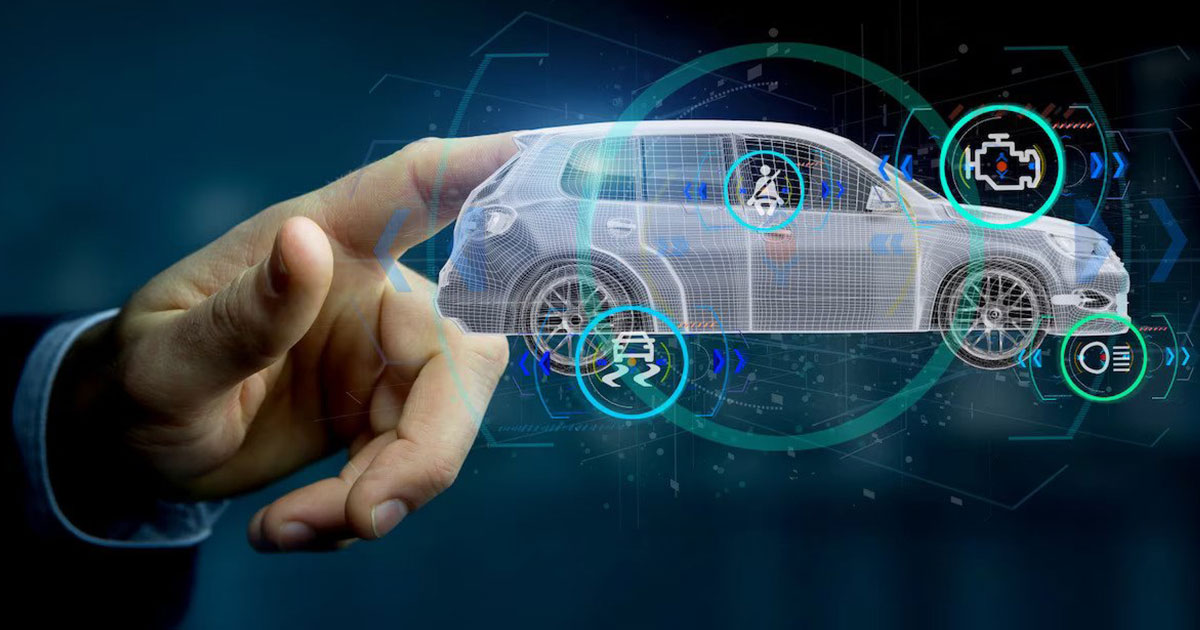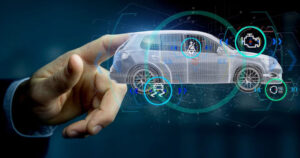Self-Driving Cars : Self-driving cars, also known as autonomous vehicles (AVs), have emerged as one of the most revolutionary advancements in the automotive industry. Powered by cutting-edge technologies and visionary innovations, these vehicles hold the promise of reshaping transportation as we know it. In this article, we explore the ten key innovations that are propelling the future of self-driving cars into uncharted territories.
1. Visionary Sensor Technologies
At the heart of every self-driving car lies a sophisticated array of sensor technologies, enabling them to perceive and interpret their surroundings with remarkable precision. Among these, LiDAR (Light Detection and Ranging) stands out, utilizing laser pulses to create detailed 3D maps of the environment. Complementing LiDAR, RADAR (Radio Detection and Ranging) employs radio waves to detect objects, providing crucial long-range capabilities. Meanwhile, ultrasonic sensors play a vital role in close-range detection, especially in parking scenarios. Alongside these, camera systems with advanced image processing algorithms serve as the eyes of autonomous vehicles, deciphering traffic signs, lane markings, and pedestrian movements.
2. Artificial Intelligence And Machine Learning
The brains behind self-driving cars come in the form of cutting-edge artificial intelligence and machine learning algorithms. Deep learning algorithms, modeled after the human brain’s neural networks, excel in recognizing patterns and making complex decisions. Neural networks play a pivotal role in real-time data processing, enabling the vehicle to perceive its surroundings, anticipate changes, and respond with remarkable efficiency.
3. HD Mapping And GPS Localization

High-definition mapping and precise GPS localization are essential for the accurate navigation of self-driving cars. High-definition maps provide intricate details about the road’s geometry, lane markings, and potential obstacles. This data, combined with real-time sensor inputs, allows autonomous vehicles to precisely determine their location at any given moment, ensuring safe and reliable journeys.
4. V2X Communication
V2X (Vehicle-to-Everything) communication is a transformative innovation that enhances the capabilities of self-driving cars. Within V2X, three primary communication types hold significance: Vehicle-to-vehicle (V2V), Vehicle-to-Infrastructure (V2I), and Vehicle-to-Pedestrian (V2P). V2V communication allows cars to exchange vital information about their speed, position, and intentions, enabling smoother traffic flow and preventing accidents. V2I communication enables vehicles to connect with traffic signals, road signs, and infrastructure, providing real-time updates about traffic conditions and hazards. V2P communication allows cars to interact with pedestrians, enhancing safety and facilitating pedestrian-friendly traffic management.
5. Cybersecurity And Safety Measures
With the growing dependence on connected technologies, ensuring the cybersecurity of self-driving cars is paramount. Vulnerability assessments are conducted to identify potential weaknesses in the vehicle’s software and communication systems. Secure communication protocols are implemented to protect against hacking and unauthorized access to critical systems. Redundancy systems are put in place to ensure that the vehicle can maintain control and make safe decisions even in the event of a system failure.
6. Human-Machine Interface (HMI) Enhancements
Creating an intuitive and user-friendly interface is crucial for self-driving cars to gain widespread acceptance. HMI enhancements include user interfaces that present information in a clear and comprehensible manner, minimizing distractions. Voice commands and natural language processing enable drivers to interact with the vehicle seamlessly. Additionally, advanced driver monitoring systems continuously assess the driver’s attentiveness and can intervene if needed, ensuring a smooth transition between manual and autonomous driving modes.
7. Energy Efficiency And Sustainability

In the pursuit of a greener future, self-driving cars are embracing energy efficiency and sustainability. Many autonomous vehicles are designed as electric or hybrid models, reducing reliance on fossil fuels and minimizing greenhouse gas emissions. Furthermore, energy recovery systems harness kinetic energy during braking and deceleration, recharging the vehicle’s batteries and increasing overall efficiency. The integration of eco-friendly materials in vehicle construction also contributes to reducing the environmental footprint of self-driving cars.
8. Regulations And Policy Frameworks
The advent of self-driving cars raises complex legal and ethical considerations. Governments and regulatory bodies worldwide are actively working on establishing guidelines and standards for the safe deployment of autonomous vehicles on public roads. Additionally, determining liability and insurance protocols in the event of accidents involving self-driving cars is a critical aspect to be addressed. Ethical challenges, such as programming cars to make life-or-death decisions, also require thoughtful consideration and debate.
9. Testing And Deployment Facilities
Thorough testing and evaluation are vital before self-driving cars can be deployed on a large scale. Simulation environments allow engineers to test various scenarios and fine-tune algorithms without real-world risks. Closed-course testing facilities provide a controlled environment for manufacturers to evaluate the performance of autonomous vehicles in diverse conditions. Real-world pilot programs are conducted in specific cities or regions, allowing self-driving cars to operate on public roads with human oversight, which helps gather data and refine the technology further.
10. Future Prospects And Socio-Economic Impact

The proliferation of self-driving cars is expected to have far-reaching implications on various aspects of society. Urban planning will be significantly influenced as cities adapt to a world with autonomous vehicles, potentially reducing the need for parking spaces and altering traffic patterns. Employment sectors may experience disruptions as autonomous transportation affects jobs in driving-related industries. Skill reskilling and training programs may be essential to prepare the workforce for new opportunities. Moreover, the widespread adoption of self-driving cars could have positive environmental implications, including reduced traffic congestion and improved air quality.
Also Read : 10 Impressive Uses Of Artificial Intelligence In Everyday Life
Conclusion
As the automotive industry ventures into a future of self-driving cars, it is evident that a convergence of visionary innovations is driving this transformation. From advanced sensor technologies and artificial intelligence to sustainable practices and ethical considerations, the potential of autonomous vehicles to revolutionize transportation is immense. Embracing these innovations with caution and foresight will pave the way for a future where self-driving cars become an integral part of everyday life, enhancing safety, efficiency, and sustainability on our roads.
Source Image : Freepik





